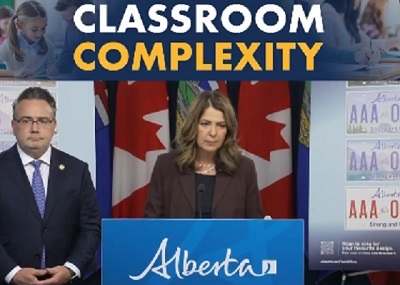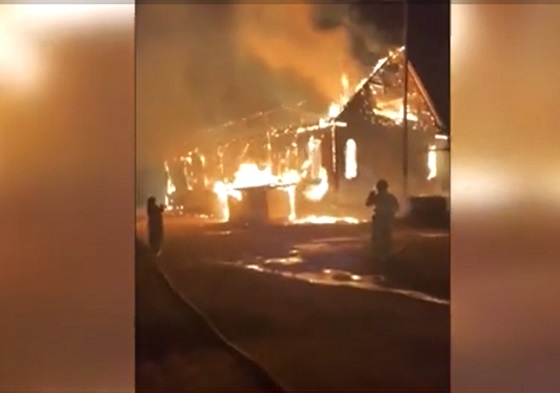Alberta
Provincial pension plan may mean big savings for Albertans

From the Fraser Institute
By Tegan Hill
Amid a growing separatist movement in Alberta, a recent poll commissioned by the Smith government found that 55 per cent of Albertans would vote to replace the “Canada Pension Plan (CPP) with an Alberta Pension Plan that guaranteed all Alberta seniors the same or better benefits.” That’s a massive surge in support since last year when support for a provincial plan was approximately 22 per cent. And while there are costs and benefits to leaving the CPP, one thing is clear—Albertans could see savings under a provincial pension plan.
First, some context.
From 1981 to 2022 (the latest year of available data) Alberta workers contributed 14.4 per cent (on average) of total CPP payments while retirees in the province received only 10.0 per cent of the payments, due mainly to the province’s relatively high rates of employment, higher average incomes and younger population (i.e. fewer retirees).
Over that same period, Albertans’ net contribution to the CPP—the amount Albertans paid into the program over and above what retirees in Alberta received in CPP payments—was $53.6 billion. That’s more than six times more than British Columbia, the only other province that paid more into the CPP than retirees in the province received in benefits.
Some analysts argue that the surge in support for a provincial pension plan in Alberta is a result of strategic wording by the Smith government, specifying that seniors would be guaranteed the same or better benefits than under the current CPP.
It’s true, the wording of a poll question can impact the results. But according to the federal legislation that governs the CPP, any province that wishes to withdraw from the CPP in favour of a provincial plan must provide comparable benefits.
And in fact, several analyses show that due to Alberta’s demographic and economic factors, Alberta workers would receive the same retirement benefits under a provincial pension plan but pay lower contribution rates compared to what they currently pay, while contributions rates would have to increase for Canadians outside Alberta (excluding Quebec) to maintain the same benefits under the CPP.
More specifically, according to a report commissioned by the Smith government, Alberta’s contribution rate, which is effectively a tax taken off paycheques, would fall from the base CPP contribution rate (9.9 per cent) to an estimated 5.85 per cent under a provincial pension plan. That would save each Albertan up to $2,850 in 2027 (the first year of the hypothetical Alberta plan). Again, this lower contribution rate (i.e. tax) would deliver the same benefit levels in Alberta as the current CPP.
Even under more conservative assumptions, Albertans would still pay a lower contribution rate while receiving the same benefits. According to economist Trevor Tombe’s estimate, Alberta’s contribution rate would drop to 8.2 per cent and save Albertan workers approximately $836 annually.
Support for a separate provincial pension plan is on the rise. And Albertans should know that under an Alberta plan, due to demographic and economic factors, they could pay a lower contribution rate yet receive the same level of benefits.
Alberta
Alberta taxpayers should know how much their municipal governments spend

From the Fraser Institute
By Tegan Hill and Austin Thompson
Next week, voters across Alberta will go to the polls to elect their local governments. Of course, while the issues vary depending on the city, town or district, all municipal governments spend taxpayer money.
And according to a recent study, Grande Prairie County and Red Deer County were among Alberta’s highest-spending municipalities (on a per-person basis) in 2023 (the latest year of comparable data). Kara Westerlund, president of the Rural Municipalities of Alberta, said that’s no surprise—arguing that it’s expensive to serve a small number of residents spread over large areas.
That challenge is real. In rural areas, fewer people share the cost of roads, parks and emergency services. But high spending isn’t inevitable. Some rural municipalities managed to spend far less, demonstrating that local choices about what services to provide, and how to deliver them, matter.
Consider the contrast in spending levels among rural counties. In 2023, Grande Prairie County and Red Deer County spent $5,413 and $4,619 per person, respectively. Foothills County, by comparison, spent just $2,570 per person. All three counties have relatively low population densities (fewer than seven residents per square kilometre) yet their per-person spending varies widely. (In case you’re wondering, Calgary spent $3,144 and Edmonton spent $3,241.)
Some of that variation reflects differences in the cost of similar services. For example, all three counties provide fire protection but in 2023 this service cost $56.95 per person in Grande Prairie County, $38.51 in Red Deer County and $10.32 in Foothills County. Other spending differences reflect not just how much is spent, but whether a service is offered at all. For instance, in 2023 Grande Prairie County recorded $46,283 in daycare spending, while Red Deer County and Foothills County had none.
Put simply, population density alone simply doesn’t explain why some municipalities spend more than others. Much depends on the choices municipal governments make and how efficiently they deliver services.
Westerlund also dismissed comparisons showing that some counties spend more per person than nearby towns and cities, calling them “apples to oranges.” It’s true that rural municipalities and cities differ—but that doesn’t make comparisons meaningless. After all, whether apples are a good deal depends on the price of other fruit, and a savvy shopper might switch to oranges if they offer better value. In the same way, comparing municipal spending—across all types of communities—helps Albertans judge whether they get good value for their tax dollars.
Every municipality offers a different mix of services and those choices come with different price tags. Consider three nearby municipalities: in 2023, Rockyview County spent $3,419 per person, Calgary spent $3,144 and Airdrie spent $2,187. These differences reflect real trade-offs in the scope, quality and cost of local services. Albertans should decide for themselves which mix of local services best suits their needs—but they can’t do that without clear data on what those services actually cost.
A big municipal tax bill isn’t an inevitable consequence of rural living. How much gets spent in each Alberta municipality depends greatly on the choices made by the mayors, reeves and councillors Albertans will elect next week. And for Albertans to determine whether or not they get good value for their local tax dollars, they must know how much their municipality is spending.
Alberta
Premier Smith addresses the most important issue facing Alberta teachers: Classroom Complexity

Premier Danielle Smith is posting this response to a media question about Classroom Complexity.
While Albertans are hearing a lot about capping class sizes, Premier Smith says it might be a much better idea to talk about capping “complexity”.
The challenges teachers face in today’s classrooms are recognized, and work continues toward practical solutions that address their concerns.
Achieving a fair and reasonable agreement that best supports students remains a top priority. pic.twitter.com/o4UCt7sDoU
— Danielle Smith (@ABDanielleSmith) October 16, 2025
-

 Red Deer55 mins ago
Red Deer55 mins agoThe City of Red Deer’s Financial Troubles: Here Are The Candidates I Am Voting For And Why.
-

 Alberta2 days ago
Alberta2 days agoClick here to help choose Alberta’s new licence plate design
-

 National2 days ago
National2 days agoDemocracy Watch Renews Push for Independent Prosecutor in SNC-Lavalin Case
-

 International2 days ago
International2 days agoDaughter convinces healthy father to die in double assisted suicide with mother
-

 illegal immigration2 days ago
illegal immigration2 days agoLos Angeles declares a state of emergency over ICE deportations
-

 International2 days ago
International2 days agoHamas will disarm or die
-

 International2 days ago
International2 days agoUS Warns Hamas To Halt Executions
-

 Indigenous2 days ago
Indigenous2 days agoConstitutional lawyer calls for ‘false’ claims to end in Canadian residential schools burials







